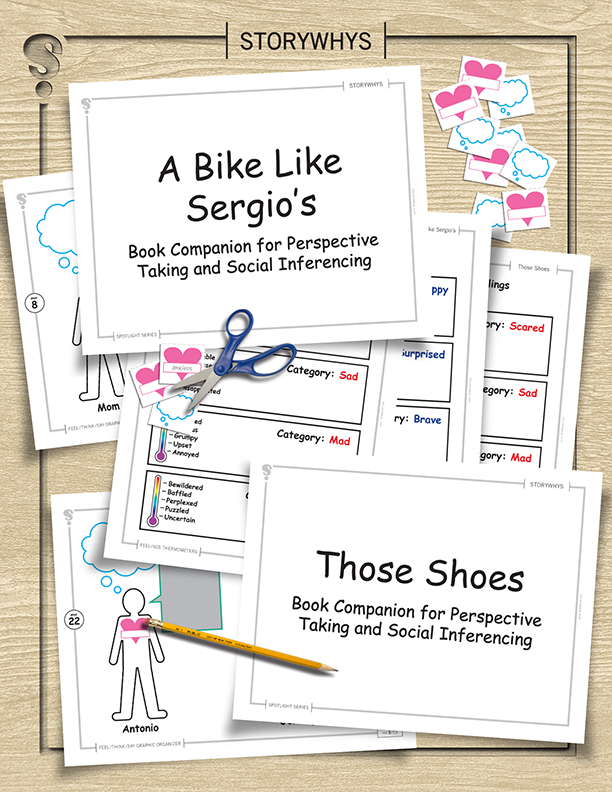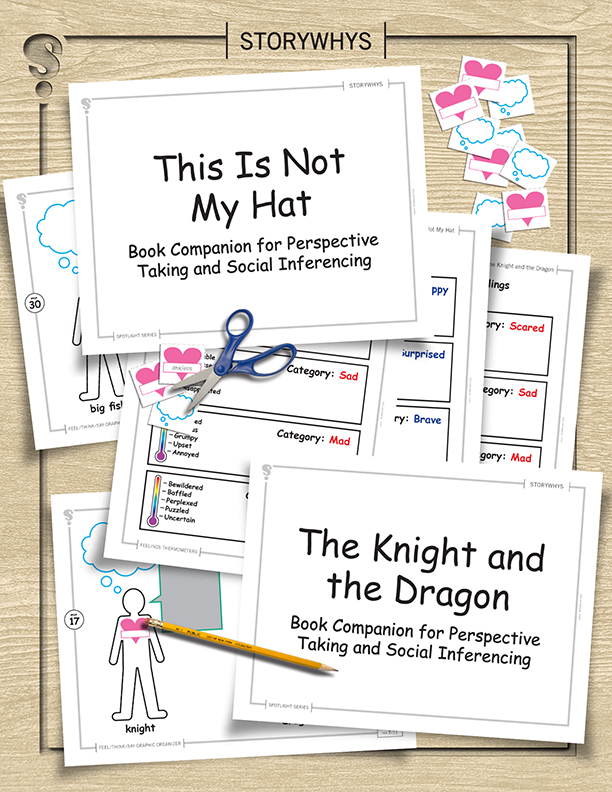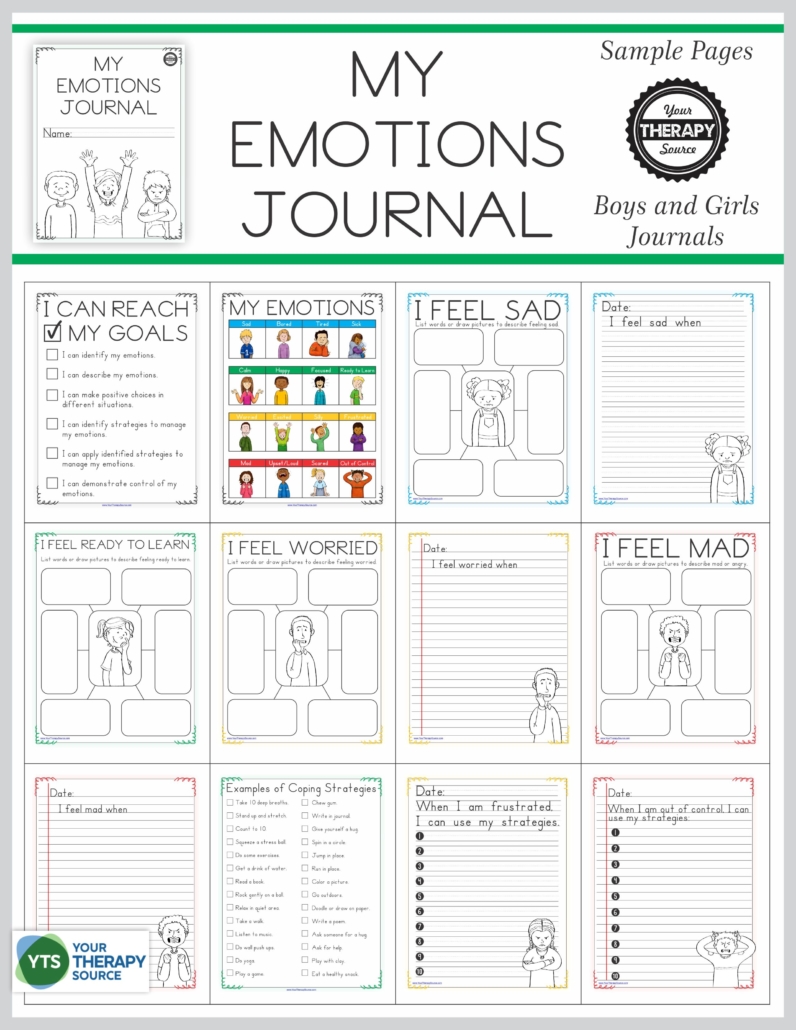Perspective Taking IEP Goals – Examples and Tips

Perspective taking refers to the ability to understand situations from the point of view of others and is a crucial component of social-emotional learning. It forms the basis of empathy and is vital to our everyday social interactions. Perspective taking IEP goals are designed to help students, especially those on the autism spectrum or with social cognition difficulties, to improve their social skills. By setting specific, measurable, achievable, relevant, and time-bound (SMART) goals, we can help students develop essential skills, like understanding emotions and social cues, leading to improved social interactions. Through these perspective taking IEP goals, we aim to provide a comprehensive approach to bolster students’ abilities in key social and emotional areas.
WHAT IS PERSPECTIVE TAKING?
Perspective taking is the ability to understand a situation or problem from someone else’s point of view. It involves recognizing and interpreting nonverbal communication, such as facial expression, body language, and the meaning behind spoken words. This is a crucial element of social cognition, which enables individuals to adapt to different social situations.
WHY IS TEACHING PERSPECTIVE TAKING IMPORTANT?
Teaching perspective taking is an important social skill, particularly for students in special education or with Autism Spectrum Disorder who may have a difficult time interpreting social cues. It helps to foster better communication, empathy, and problem solving. This skill is also crucial in teaching students how to make appropriate decisions based on context clues and understanding the perspectives of others.

Book Companions for Perspective Taking and Emotions Vocabulary
COMPONENTS OF PERSPECTIVE TAKING
Understanding the components of perspective taking can provide a clearer path to supporting students in their social interactions and empathetic growth. The main components include the following:
- Recognizing Social Cues: This involves interpreting nonverbal communication such as facial expressions and body language. It is a fundamental element in understanding the emotions and intentions of others.
- Interpreting Emotions: This involves recognizing the feelings of others based on the given social cues. Students must develop the ability to correctly interpret emotions to respond appropriately in social situations.
- Theory of Mind: Theory of Mind refers to the ability to understand that other people have their own thoughts, feelings, and perspectives, which may be different from our own. It forms the basis for empathy and social understanding.
- Empathy: This involves the ability to feel what another person is feeling. Empathy is central to perspective taking as it allows individuals to respond compassionately to others.
- Response to Perspective: This involves the ability to respond appropriately based on understanding the perspective of others. This could include verbal responses, change of behavior, or other social adjustments.
- Understanding Different Perspectives: This refers to the capacity to comprehend that there can be multiple valid viewpoints to a situation. Recognizing this diversity of thought can lead to more constructive conversations and resolutions.
It’s essential to recognize that these components don’t exist in isolation; they overlap and work together to create a comprehensive understanding of perspective taking. When developing perspective taking IEP goals, consider which components your students need to work on and tailor your objectives accordingly.
PERSPECTIVE TAKING IEP GOALS EXAMPLES: RECOGNIZING SOCIAL CUES
Goal A: By the end of the month, the student will accurately interpret a peer’s body language in 4 out of 5 social situations as observed by the classroom teacher.
Goal B: Within 6 weeks, the student will correctly identify 3 out of 4 facial expressions presented in wordless videos, as measured by the speech-language pathologist.
Goal C: Over the next 8 weeks, the student will accurately identify the facial expression of characters in a picture scene with 80% accuracy during 3 consecutive sessions.
INTERPRETING EMOTIONS
Goal A: Within 4 weeks, the student will correctly identify the emotion expressed by a peer during a role-play scenario in 9 out of 10 trials.
Goal B: Over the next 2 months, the student will accurately interpret the emotions depicted in 3 out of 4 short stories, as measured by a classroom teacher.
Goal C: By the end of 6 weeks, the student will correctly match a given emotion to an appropriate facial expression with 90% accuracy in 5 consecutive sessions.
PERSPECTIVE TAKING IEP GOALS EXAMPLES: THEORY OF MIND
Goal A: Within 3 months, the student will accurately describe a character’s thoughts in a social story in 4 out of 5 opportunities.
Goal B: Over the next 8 weeks, the student will predict what a peer might think or feel in a specific situation with 85% accuracy during social interactions.
Goal C: By the end of the term, the student will successfully express understanding that others may have different thoughts or feelings in 7 out of 10 social situations.
EMPATHY SPEECH THERAPY GOAL EXAMPLES
Goal A: Over the next 4 weeks, the student will appropriately express empathy towards a peer’s feelings in 3 out of 4 role-play scenarios.
Goal B: Within 2 months, the student will accurately identify a situation that requires empathy in 8 out of 10 social stories.
Goal C: By the end of 3 months, the student will demonstrate empathy by suggesting an appropriate comforting response in 7 out of 10 role-play situations.
RESPONSE TO PERSPECTIVE
Goal A: Within 4 weeks, the student will demonstrate an appropriate verbal response based on a peer’s perspective in 3 out of 5 social interactions.
Goal B: Over the next 2 months, the student will adjust their behavior appropriately based on a peer’s perspective in 7 out of 10 social situations.
Goal C: By the end of the term, the student will show understanding by summarizing a peer’s point of view accurately in 4 out of 5 opportunities during classroom discussions.
PERSPECTIVE TAKING IEP GOALS EXAMPLES: UNDERSTANDING DIFFERENT PERSPECTIVES
Goal A: Over the next 6 weeks, the student will correctly identify different characters’ perspectives in 3 out of 4 short stories.
Goal B: Within 2 months, the student will recognize the different points of view in a social situation with 90% accuracy in 4 out of 5 opportunities.
Goal C: By the end of the quarter, the student will express understanding that there can be multiple valid viewpoints to a situation in 8 out of 10 classroom discussions.
THE ROLE OF SPEECH THERAPISTS IN PERSPECTIVE TAKING
Speech therapists play a crucial role in teaching perspective taking, particularly for students with social pragmatic goals. They utilize various strategies to develop a child’s social communication, pragmatics, and language skills. These can include prompting conversational turns, teaching how to ask follow-up questions, and introducing sentence starters. Speech therapists often facilitate role play scenarios to provide students with opportunities to practice new skills in a controlled environment.
Practical speech therapy activities may involve discussing a variety of text types, such as a short story or a wordless picture book, allowing the child to analyze different perspectives. Speech therapists also utilize familiar visuals and interactive comic strips to teach perspective taking in a fun and engaging way. For older students, they may even use video games as a tool to engage in social conversation about different situations and perspectives.
Incorporating a pragmatic language goal in an IEP can help students with perspective taking. This could involve setting a goal for a student to share information about a different topic in each session or using appropriate behaviors during conversational exchanges. The progress of these goals is tracked through data collections and teacher observations, offering a clear path towards improvement.

Emotions and Perspective Taking Book Companions
ENHANCING PERSPECTIVE TAKING SKILLS IN SCHOOL SETTINGS
The school setting provides a great way to enhance perspective taking skills among students. Teachers, alongside speech therapists, can employ various methods to foster these essential social-emotional learning skills. They can encourage students to express feelings using simple sentences or conduct goal-setting sessions to address any social problem. They can also use common objects to explain different perspectives or engage students in critical thinking activities.
A variety of techniques can be used to engage students in perspective taking. For instance, graphic organizers can be used to map out the main idea from different perspectives. Teachers can also introduce activities that require students to solve problems from different viewpoints, fostering their perspective-taking skills.
Role play activities can be used to simulate real-life situations, allowing students to apply their perspective-taking skills in different contexts. For instance, a role-play activity might involve a scenario where a student needs to understand the perspective of a new person they meet. Teachers can provide sentence frames to guide students in these role-play activities, helping them create correct sentences that express understanding and empathy.
Teachers can also incorporate technology into their lessons. For instance, video games can provide a unique opportunity for students to engage in perspective taking. Games often require players to consider different perspectives to solve problems or progress through levels, providing a modern and engaging way to practice these skills.
In the academic setting, teachers can provide extra support for students who have a hard time with perspective taking. They can use slower rates of speech, provide additional time for students to process information, or use visual aids to support understanding. This approach ensures that all students, regardless of their current level of perspective-taking skills, have the opportunity to improve and succeed.
ADDITIONAL WAYS TO SUPPORT PERSPECTIVE TAKING IN THE CLASSROOM
Teaching perspective taking in the classroom setting involves integrating it into daily activities and conversations. Teachers can make use of social situations that naturally occur during the day to point out different perspectives. Role-play, social stories, and video modeling can also be effective. Visual aids such as graphic organizers can be helpful for teaching the Theory of Mind, which underlies perspective taking.
Use a variety of texts and resources, including short stories, picture books, and wordless videos, to help students recognize and interpret different emotions. Engage students in group discussions about different perspectives and encourage them to share their thoughts.
Regular collaboration with speech-language pathologists can help to develop individualized strategies for improving students’ conversation skills and understanding of social cues.

Emotional Regulation Worksheets – For Boys and Girls
HELPFUL TIPS OR SUGGESTIONS TO HELP STUDENTS REACH THEIR IEP GOALS ON PERSPECTIVE TAKING
- Consistent Practice: Practice is crucial for improving perspective-taking skills. Regularly integrate perspective-taking exercises into daily activities and conversations.
- Visual Supports: Use visual aids, such as social stories or visual cues, to help students understand and interpret different perspectives.
- Collaborative Efforts: Collaboration with speech-language pathologists, special education teachers, and parents can enhance the effectiveness of perspective taking interventions.
- Small Group Sessions: Small group sessions provide a safe space for students to practice and improve their social interaction skills.
- Role-play: Role-play is a good way to help students understand and experience different perspectives.
- Positive Reinforcement: Use positive reinforcement to encourage students’ efforts and motivate them to continue improving their perspective-taking skills.
Through the combined efforts of teachers, therapists, and parents, we can successfully assist students in meeting their perspective taking IEP goals.



